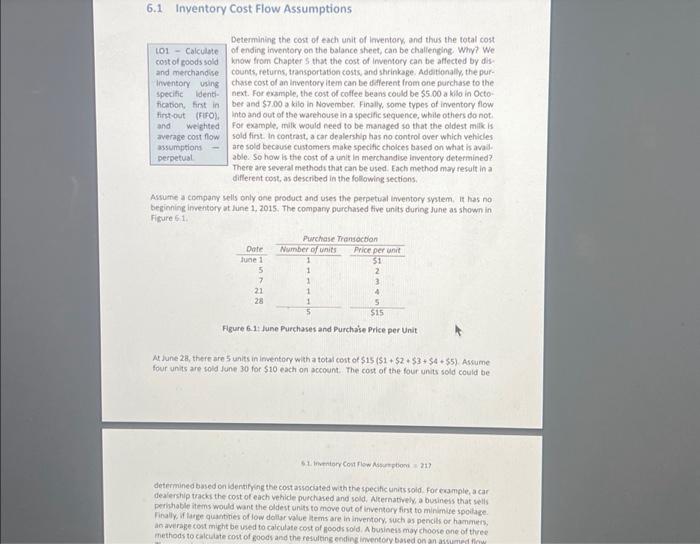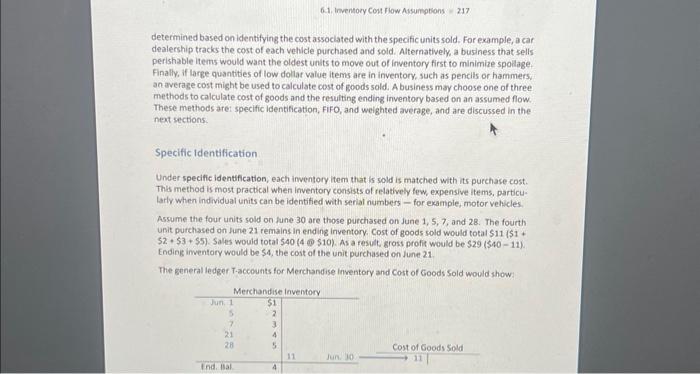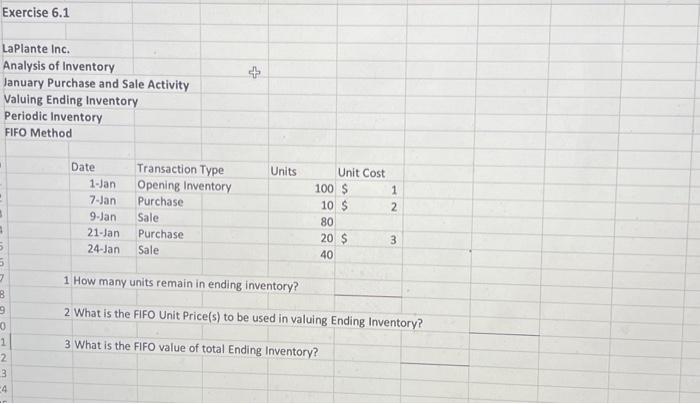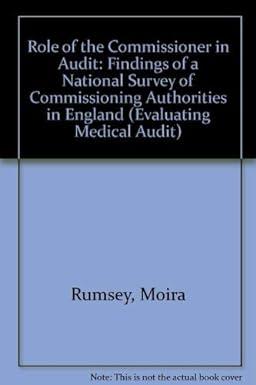Answered step by step
Verified Expert Solution
Question
1 Approved Answer
6.1 Inventory Cost Flow Assumptions LO1 Calculate cost of goods sold and merchandise inventory using specific identi- fication, first in first-out (FIFO), and weighted average
6.1 Inventory Cost Flow Assumptions LO1 Calculate cost of goods sold and merchandise inventory using specific identi- fication, first in first-out (FIFO), and weighted average cost flow assumptions perpetual. Determining the cost of each unit of inventory, and thus the total cost of ending inventory on the balance sheet, can be challenging. Why? We know from Chapter 5 that the cost of inventory can be affected by dis- counts, returns, transportation costs, and shrinkage. Additionally, the pur- chase cost of an inventory item can be different from one purchase to the next. For example, the cost of coffee beans could be $5.00 a kilo in Octo- ber and $7.00 a kilo in November. Finally, some types of inventory flow into and out of the warehouse in a specific sequence, while others do not. For example, milk would need to be managed so that the oldest milk is sold first. In contrast, a car dealership has no control over which vehicles are sold because customers make specific choices based on what is avail- able. So how is the cost of a unit in merchandise inventory determined? There are several methods that can be used. Each method may result in a different cost, as described in the following sections. Assume a company sells only one product and uses the perpetual inventory system. It has no beginning inventory at June 1, 2015. The company purchased five units during June as shown in Figure 6.1. Date June 1 5 Price per unit $1 2 3 4 5 $15 Figure 6.1: June Purchases and Purchase Price per Unit Purchase Transaction 7 21 28 Number of units 1 1 1 1 1 5 At June 28, there are 5 units in inventory with a total cost of $15 ($1 + $2+ $3+ $4 + $5). Assume four units are sold June 30 for $10 each on account. The cost of the four units sold could be 6.1. Inventory Cost Flow Assumptions 217 determined based on identifying the cost associated with the specific units sold. For example, a car dealership tracks the cost of each vehicle purchased and sold. Alternatively, a business that sells perishable items would want the oldest units to move out of inventory first to minimize spoilage. Finally, if large quantities of low dollar value items are in inventory, such as pencils or hammers, an average cost might be used to calculate cost of goods sold. A business may choose one of three methods to calculate cost of goods and the resulting ending inventory based on an assumed flow



Step by Step Solution
There are 3 Steps involved in it
Step: 1

Get Instant Access to Expert-Tailored Solutions
See step-by-step solutions with expert insights and AI powered tools for academic success
Step: 2

Step: 3

Ace Your Homework with AI
Get the answers you need in no time with our AI-driven, step-by-step assistance
Get Started


